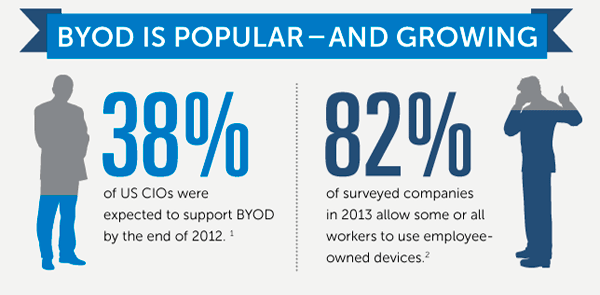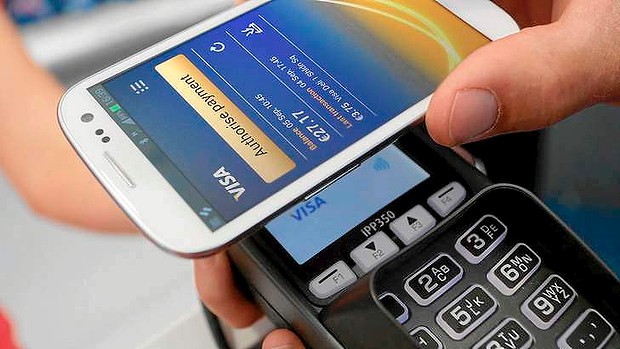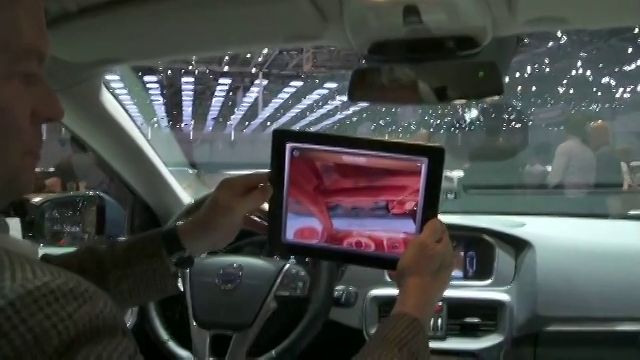Trends in the mobile development market in 2013
Today in the market of mobile development one can observe a paradoxical situation: the technology is ahead of the thought. Programmers and designers have at their disposal a wide range of tools and technologies, on the basis of which you can generate a lot of ideas for potentially successful mobile applications.
It is not by chance that such a format as a hackathon, which unites IT specialists for the joint development of mobile products, is becoming particularly popular. The market needs new concepts.
One of the most attractive areas for the development of fantasy is the technology of augmented reality, a lot of interesting and ambiguous is born in it. There are other promising areas: business intelligence, mobile payments, smart home, medicine. If you are wondering what is happening in these areas from the point of view of a mobile developer, welcome to Cat.
')

At one time, laptops and WiFi spawned in the corporate sector the technological wave Mobile 1.0. It reached its peak at the end of 2008, when laptops first won desktop PCs in terms of sales.
As the popularity of smartphones and tablets grew, they began to talk about Mobile 2.0. Soon the story will repeat: according to Forrester Research, already in 2015, laptops will be defeated by tablets (in terms of sales).
Today, the concept of BYOD (Bring Your Own Device / Bring Your Device) is one of the most popular and stable trends in the corporate sector Mobile 2.0. To increase productivity and mobility, employees are allowed to use personal mobile devices for work.
Companies around the world are implementing BYOD. This initiative was born from below, then the management picked it up, because one device for working at home and in the office is convenient. Thanks to the multi-user mode on the gadget, you can set 2 profiles and at the operating system level to implement the distinction of rights and opportunities.
It is important to bear in mind that without the development of regulations on the security of corporate data, this trend can become a nightmare in terms of information security.

Source: fragment of infographic Readwrite + Intel , 2013.
BYOD is directly related to mobile development: business needs solutions for remote work and protection of corporate data. Creating mobile clients for CRM, SharePoint, knowledge management systems and other corporate resources - all of these areas will be in great demand in the coming years.
The thirst for mobile innovation was realized by the leaders of the traditional market for desktop applications for business. So, the company SAP last year announced the creation of a single platform (SDK) for the development of mobile applications - the SAP Mobile Platform. Already this year, the media publish news about successful projects based on this technology.
Opportunities for the introduction of mobile applications in the business processes of companies are enormous: marketing and sales, finance, service, personnel, etc. Looking for more specific ideas for developing in-demand applications? You are welcome:
A. Applications for sales professionals. Data visualization. Mobile agents for remote work of dealers and development of their sales system. Users get access to presentations and descriptions of services of the parent company, enter data into corporate CRM, register their orders on the server, view financial statistics, etc. Such applications can improve the efficiency of insurance companies, advertising agencies, network companies selling auto parts, real estate agencies and etc.
B. Applications for accounting of working time. Such solutions are suitable for any business area.
B. Applications for marketing, advertising and creative agencies : mobile tools for PR-companies and marketing research. They will allow for field research and promotions with a survey of participants. Down with paper forms! Let marketers and promoters use tablets or smartphones to conduct surveys. Results will be automatically sent to the company's server for further processing. The organizers will be able to adjust surveys in real time, because the digital questionnaire is a client application that is regularly updated based on the initial data from the company's server.
G. Generate and implement your ideas. Useful analytics as a hint:

Now this area is at the initial stage of its development, however in the coming years we will observe an increase in demand for software for making various payments via mobile phone: applications for phones with NFC-tag support (Near Field Communication), as well as software for mobile banking and payment terminals.

Today, the most popular method of mobile payment is sending premium SMS, but over time the statistics will change. NFC and mCommerce projects grow and develop:
Analysts believe that the active mobile payment systems will be in 2014-2015, and now is the time to launch test projects and gain experience.
Here we come to the most interesting and promising technology in mobile development - augmented reality. If earlier this topic was developed mainly in science fiction films and futuristic forecasts, in recent years it has taken more and more confident positions in the real world. The media regularly publish news on the launch of new projects based on augmented reality: advertising companies of leading world brands, browsers for city navigation, and Google Glass apps. From the last examples it can be noted:

Source: YouTube, channel inglobe .
Opportunities for programmers and designers in this area are simply inexhaustible: developing applications for organizing effective sales and presentations, electronic reference books and consultants, applications for games / training, and much more.
One of the most sought-after areas is applications that help users make purchases: they provide additional multimedia information about products, help you navigate around an exhibition or shopping center, and also allow you to organize a spectacular presentation of exhibits, products and works of art. Potential customers of such developments: retail sales, museums and art galleries, exhibition companies, event organizers.
As one example from a whole list of successfully implemented projects, you can name the Volvo X-RAY application, which was designed to attract visitors to the Geneva Motor Show last year. It was intended for a detailed study of the new Volvo model, the user could see the hidden engineering stuffing, both outside the car and inside the cabin.


Source: vimeo.com, channel La Comunidad .
This topic has remained in trend for several years. Today, the development of shells for IPTV, downloaders for digital set-ups and Android applications for managing TV devices based on SMART TV technology is still in demand.
Software for SMART TV and IPTV allows you to use smartphones and tablets as joysticks for games, for browsing the Internet, managing programs, etc.
Another popular trend is the development of applications for controlling any electronics of the “smart home” using various Android mobile devices.

In the photo: demonstration of the Smart View mobile application.
This category contains a variety of applications and additional devices for smartphones and tablets that help the user take care of their health, analyze the quality of products and the environment, ensure their safety / security of property, etc.
Some examples of similar developments:
Lapka - a project implemented by the same American start-up and the company Promwad - a set of five sensors to determine the level of radiation, humidity, electromagnetic radiation and the amount of nitrates in vegetables and fruits. These sensors connect to the iPhone and display the measurement results in a special application.

Source: mylapka.com
The prosthesis of the human arm i-Limb Ultra Revolution , which can be controlled using muscles or a smartphone via Bluetooth wireless technology. A special mobile application sets the prosthesis with 24 different actions for the most common situations: working with objects, tying shoelaces, typing on digital devices, etc. The project developer is an American company Touch Bionics.

Source: touchbionics.com
So, we have reviewed the main trends in mobile development, which will be relevant this year and in the near future. At the same time, we focused on innovative developments and did not touch on such topical issues as social networks, game development, photo sharing, etc.
Perhaps some examples from this article will inspire you to your own projects, and some will suggest that the world is going crazy. :) In any case, I hope that my analysis of modern mobile technologies will be useful for you.
[!?] Questions and comments are welcome. They will be answered by the author of the article, Sergei Gimburg, head of mobile application development at Promwad Mobile .
It is not by chance that such a format as a hackathon, which unites IT specialists for the joint development of mobile products, is becoming particularly popular. The market needs new concepts.
One of the most attractive areas for the development of fantasy is the technology of augmented reality, a lot of interesting and ambiguous is born in it. There are other promising areas: business intelligence, mobile payments, smart home, medicine. If you are wondering what is happening in these areas from the point of view of a mobile developer, welcome to Cat.
')

Trend number 1. Business Applications: Corporate Information Management
At one time, laptops and WiFi spawned in the corporate sector the technological wave Mobile 1.0. It reached its peak at the end of 2008, when laptops first won desktop PCs in terms of sales.
As the popularity of smartphones and tablets grew, they began to talk about Mobile 2.0. Soon the story will repeat: according to Forrester Research, already in 2015, laptops will be defeated by tablets (in terms of sales).
Today, the concept of BYOD (Bring Your Own Device / Bring Your Device) is one of the most popular and stable trends in the corporate sector Mobile 2.0. To increase productivity and mobility, employees are allowed to use personal mobile devices for work.
Companies around the world are implementing BYOD. This initiative was born from below, then the management picked it up, because one device for working at home and in the office is convenient. Thanks to the multi-user mode on the gadget, you can set 2 profiles and at the operating system level to implement the distinction of rights and opportunities.
It is important to bear in mind that without the development of regulations on the security of corporate data, this trend can become a nightmare in terms of information security.

Source: fragment of infographic Readwrite + Intel , 2013.
BYOD is directly related to mobile development: business needs solutions for remote work and protection of corporate data. Creating mobile clients for CRM, SharePoint, knowledge management systems and other corporate resources - all of these areas will be in great demand in the coming years.
The thirst for mobile innovation was realized by the leaders of the traditional market for desktop applications for business. So, the company SAP last year announced the creation of a single platform (SDK) for the development of mobile applications - the SAP Mobile Platform. Already this year, the media publish news about successful projects based on this technology.
Opportunities for the introduction of mobile applications in the business processes of companies are enormous: marketing and sales, finance, service, personnel, etc. Looking for more specific ideas for developing in-demand applications? You are welcome:
A. Applications for sales professionals. Data visualization. Mobile agents for remote work of dealers and development of their sales system. Users get access to presentations and descriptions of services of the parent company, enter data into corporate CRM, register their orders on the server, view financial statistics, etc. Such applications can improve the efficiency of insurance companies, advertising agencies, network companies selling auto parts, real estate agencies and etc.
B. Applications for accounting of working time. Such solutions are suitable for any business area.
B. Applications for marketing, advertising and creative agencies : mobile tools for PR-companies and marketing research. They will allow for field research and promotions with a survey of participants. Down with paper forms! Let marketers and promoters use tablets or smartphones to conduct surveys. Results will be automatically sent to the company's server for further processing. The organizers will be able to adjust surveys in real time, because the digital questionnaire is a client application that is regularly updated based on the initial data from the company's server.
G. Generate and implement your ideas. Useful analytics as a hint:

Trend number 2. Mobile payment systems
Now this area is at the initial stage of its development, however in the coming years we will observe an increase in demand for software for making various payments via mobile phone: applications for phones with NFC-tag support (Near Field Communication), as well as software for mobile banking and payment terminals.

Today, the most popular method of mobile payment is sending premium SMS, but over time the statistics will change. NFC and mCommerce projects grow and develop:
- Online stores offer customers mobile applications for ordering goods and services (for example, the Japanese restaurant Tanuki for ordering sushi).
- Companies enter into contracts with telecom operators to use subscriber accounts as electronic wallets for payment. Contactless payment systems using NFC tags are being introduced at Russian gas stations (Lukoil gas stations), in public transport and in retail outlets (Megafon brand salons). Last year, NFC was launched in the St. Petersburg metro, this year a centralized payment system should appear in Moscow, at least it is believed in the metropolitan department of transport.
- Russian banks are introducing PayPass NFC technology for MasterCard cardholders and PayWave for Visa users.
Analysts believe that the active mobile payment systems will be in 2014-2015, and now is the time to launch test projects and gain experience.
Trend number 3. Multimedia references and presentations, augmented reality
Here we come to the most interesting and promising technology in mobile development - augmented reality. If earlier this topic was developed mainly in science fiction films and futuristic forecasts, in recent years it has taken more and more confident positions in the real world. The media regularly publish news on the launch of new projects based on augmented reality: advertising companies of leading world brands, browsers for city navigation, and Google Glass apps. From the last examples it can be noted:
- Announcement of face recognition API for Google Glass, developer - startup Lambda Labs.
- Update HERE Maps Nokia (augmented reality browser LiveSight for Windows Phone 8, demo - on the first picture in the article).
- The application for detecting breakdowns and car repairs from the company Inglobe Technologies (see. The screenshot below).

Source: YouTube, channel inglobe .
Opportunities for programmers and designers in this area are simply inexhaustible: developing applications for organizing effective sales and presentations, electronic reference books and consultants, applications for games / training, and much more.
One of the most sought-after areas is applications that help users make purchases: they provide additional multimedia information about products, help you navigate around an exhibition or shopping center, and also allow you to organize a spectacular presentation of exhibits, products and works of art. Potential customers of such developments: retail sales, museums and art galleries, exhibition companies, event organizers.
As one example from a whole list of successfully implemented projects, you can name the Volvo X-RAY application, which was designed to attract visitors to the Geneva Motor Show last year. It was intended for a detailed study of the new Volvo model, the user could see the hidden engineering stuffing, both outside the car and inside the cabin.


Source: vimeo.com, channel La Comunidad .
Trend number 4. Smart home systems. Digital TV: SMART TV, IPTV
This topic has remained in trend for several years. Today, the development of shells for IPTV, downloaders for digital set-ups and Android applications for managing TV devices based on SMART TV technology is still in demand.
Software for SMART TV and IPTV allows you to use smartphones and tablets as joysticks for games, for browsing the Internet, managing programs, etc.
Another popular trend is the development of applications for controlling any electronics of the “smart home” using various Android mobile devices.

In the photo: demonstration of the Smart View mobile application.
Trend number 5. Mobile technology to improve the quality of life of the user
This category contains a variety of applications and additional devices for smartphones and tablets that help the user take care of their health, analyze the quality of products and the environment, ensure their safety / security of property, etc.
Some examples of similar developments:
Lapka - a project implemented by the same American start-up and the company Promwad - a set of five sensors to determine the level of radiation, humidity, electromagnetic radiation and the amount of nitrates in vegetables and fruits. These sensors connect to the iPhone and display the measurement results in a special application.

Source: mylapka.com
The prosthesis of the human arm i-Limb Ultra Revolution , which can be controlled using muscles or a smartphone via Bluetooth wireless technology. A special mobile application sets the prosthesis with 24 different actions for the most common situations: working with objects, tying shoelaces, typing on digital devices, etc. The project developer is an American company Touch Bionics.

Source: touchbionics.com
So, we have reviewed the main trends in mobile development, which will be relevant this year and in the near future. At the same time, we focused on innovative developments and did not touch on such topical issues as social networks, game development, photo sharing, etc.
Perhaps some examples from this article will inspire you to your own projects, and some will suggest that the world is going crazy. :) In any case, I hope that my analysis of modern mobile technologies will be useful for you.
[!?] Questions and comments are welcome. They will be answered by the author of the article, Sergei Gimburg, head of mobile application development at Promwad Mobile .
Source: https://habr.com/ru/post/181546/
All Articles